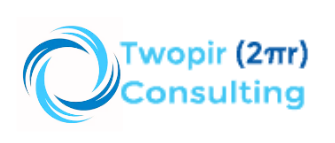Effortless Data Flow: A Comprehensive Guide To Jotform Integration With Salesforce
Introduction
In today’s fast-paced business environment, organizations are constantly seeking ways to streamline data collection and enhance workflow automation. The integration between JotForm, a versatile online form builder, and Salesforce, a leading customer relationship management (CRM) platform, offers a powerful solution for achieving these objectives. In this blog, we’ll provide a step-by-step working example of how to seamlessly integrate JotForm with Salesforce, optimizing data collection and automating processes.
Getting Started with JotForm
Begin by creating a JotForm account if you don’t have one. Once logged in, navigate to your dashboard and create a new form or select an existing one. Design the form according to your data collection needs, including all necessary fields and elements.

Salesforce Integration Setup in JotForm
Install Salesforce Connector:
- In the form settings, go to “Integrations” and locate the Salesforce integration. Install the connector by providing your Salesforce credentials.
Map Form Fields:
- Map the fields on your JotForm to corresponding fields in your Salesforce objects (e.g., Leads, Contacts, or Custom Objects). This ensures a seamless transfer of data between the two platforms.

- Map the fields on your JotForm to corresponding fields in your Salesforce objects (e.g., Leads, Contacts, or Custom Objects). This ensures a seamless transfer of data between the two platforms.
Configuring Salesforce Actions
Define Actions:
- Specify the actions you want to trigger in Salesforce when a form is submitted. Options include creating a new lead, updating a contact, or adding a record to a custom object.
Conditional Logic :
- Implement conditional logic to trigger different Salesforce actions based on specific form responses. This allows for personalized and dynamic data handling.
Testing the Integration
Submit a Test Form:
- Submit a test form through JotForm to ensure that the data is correctly transferred from JotForm to Salesforce.
Verify Salesforce Records:
- Check your Salesforce instance to confirm that the data from the JotForm submission is accurately reflected in the specified Salesforce objects.
Advanced Workflow Automation with Zapier
Integrate with Zapier:
- For advanced workflow automation, integrate JotForm with Salesforce using Zapier. Create a Zap that triggers specific actions in Salesforce based on JotForm submissions.
Define Zapier Workflow:
- Configure Zapier to perform actions in Salesforce, such as sending email notifications, updating records, or triggering additional processes based on JotForm data.
Conclusion:
Integrating JotForm with Salesforce opens up a world of possibilities for organizations seeking to optimize their data collection and workflow processes. This working example demonstrates the seamless transfer of form data to Salesforce, ensuring a unified and efficient data flow. As businesses continue to embrace digital transformation, this integration serves as a valuable asset, enabling teams to work smarter, not harder, in the competitive landscape.
Contact Us
We would love to hear from you
Please feel free to send us a message via the form
